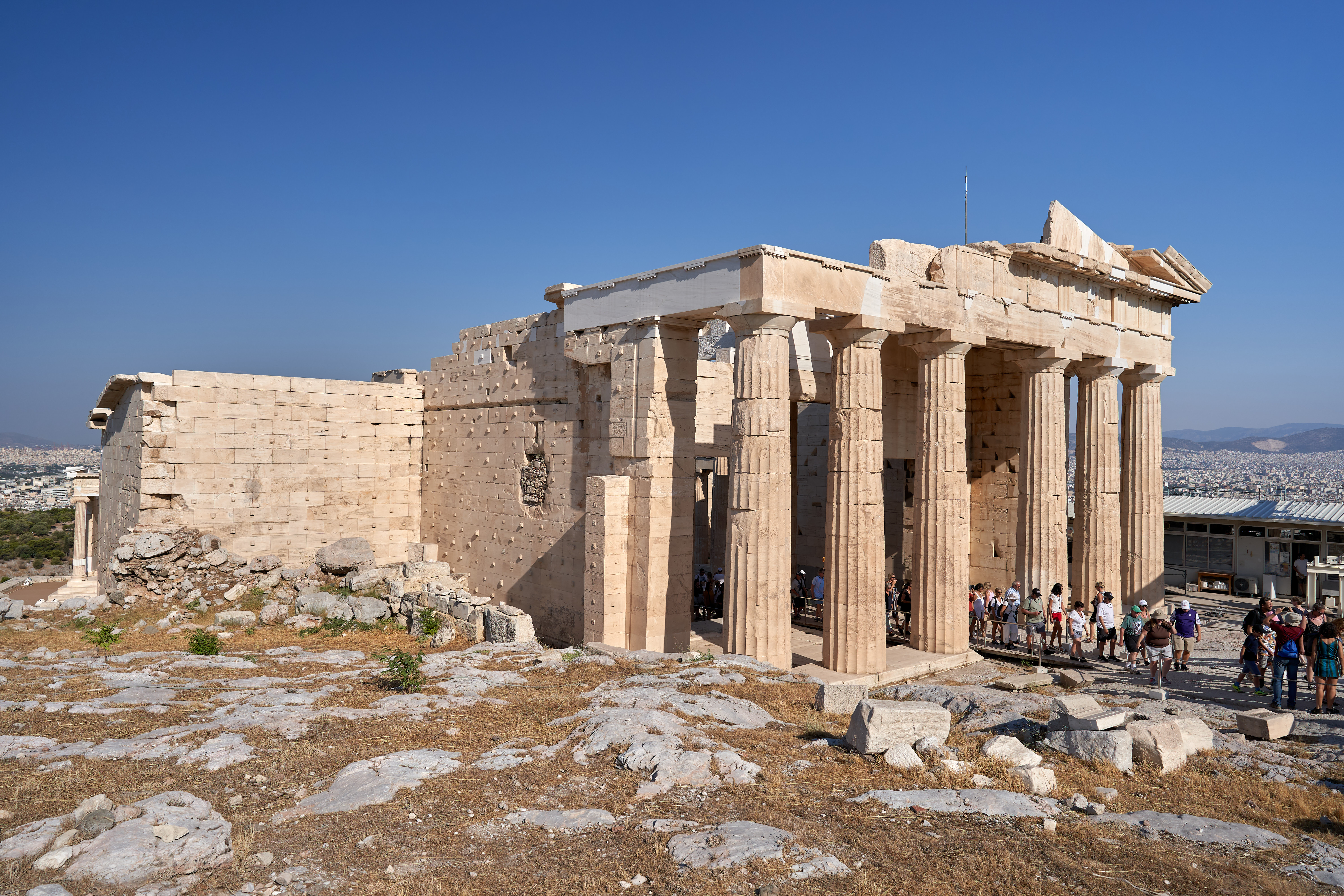Propylaea of the Acropolis - Architecture of the Sacred Gateway
Explore the Propylaea — the grand gateway to the Acropolis of Athens, designed as an architectural ritual of ascent to the divine.

The Propylaea serves as the threshold between worlds — where mortals ascend toward the realm of the gods.
Designed by Mnesicles around 437 BCE, this monumental gateway was conceived not merely as passage, but as procession.
🚪 Architecture of Ascent
Built on the steep western slope, the Propylaea manages both function and symbolism.
Its central hall features Doric columns outside and Ionic columns within — a deliberate fusion of strength and elegance, masculine and feminine, earthly and celestial.
To walk through it was to enact a transformation: from the noisy city below to the silent sanctity above.
“Every step upward is an act of purification.”
🌞 Light and Revelation
The structure was carefully oriented to frame the Parthenon in light.
As pilgrims emerged from the shadowed vestibule, the marble temple of Athena appeared radiant ahead — an architectural revelation, like dawn after night.
This choreography of light and motion exemplified Greek architectural theater — space designed to awaken both body and soul.
🏛️ The Unfinished Beauty
Construction halted in 432 BCE with the outbreak of the Peloponnesian War.
Yet even incomplete, the Propylaea endures as one of antiquity’s most innovative architectural compositions — blending geometry, perspective, and spiritual narrative into stone.
The Propylaea does not merely lead to the Acropolis — it prepares the soul to enter it.
About the Author

Architectural Writer
A history enthusiast and traveler, I created this site to help visitors experience the Acropolis and its ancient wonders.
Tags
Comments (0)
Loading comments...